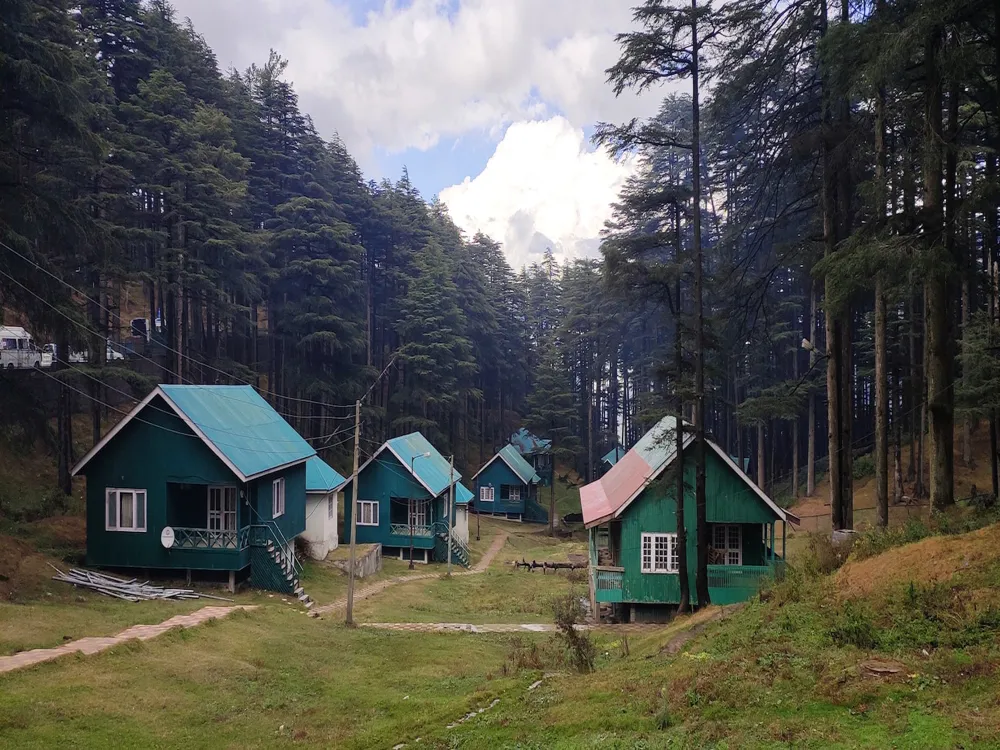Nestled in the picturesque landscape of Anantnag in Jammu and Kashmir, the Imambara Goom stands as a beacon of historical and cultural significance. This religious edifice, deeply revered in the Shia Muslim community, is not just a place of worship but a symbol of the rich heritage and communal harmony prevalent in the region. The Imambara, with its unique architectural style, reflects the diverse influences that have shaped the region's history and culture. The story of Imambara Goom is intertwined with the history of Anantnag itself, a region known for its breathtaking beauty and turbulent past. The Imambara was constructed to serve as a place of mourning and commemoration for the martyrdom of Imam Hussain, the grandson of Prophet Muhammad, an event that holds immense significance in Shia Islam. Over the years, this religious site has become a center for cultural and religious activities, attracting visitors and devotees from all over. The Imambara is not just a religious landmark but also a testament to the resilience and unity of the people of Anantnag. Despite facing numerous challenges, including political unrest and natural calamities, the Imambara has stood firm, serving as a symbol of hope and perseverance. Its presence is a constant reminder of the area's rich cultural tapestry, woven with threads of different religions, traditions, and beliefs. The significance of the Imambara Goom goes beyond its religious and historical importance. It is a place where art, culture, and spirituality converge. Throughout the year, the Imambara hosts various cultural events and religious ceremonies, drawing people from diverse backgrounds. It is a melting pot of ideas, beliefs, and traditions, embodying the true spirit of Kashmiriyat - the ethno-national and social consciousness and cultural values of the Kashmiri people. In summary, the Imambara Goom of Anantnag is not just a monument but a living, breathing entity that continues to inspire and unite people. It stands as a proud reminder of the region's rich heritage and the enduring spirit of its people. The architecture of Imambara Goom in Anantnag is a remarkable blend of Persian and Kashmiri design elements, creating a stunning visual spectacle that captivates the eye and the heart. The structure's design reflects the rich artistic heritage of the region, with intricate carvings, detailed calligraphy, and vibrant colors adorning its walls and ceilings. The central hall of the Imambara is particularly noteworthy. It features high ceilings and spacious interiors, designed to accommodate large gatherings during religious ceremonies and events. The ceilings are adorned with elaborate wooden carvings and vibrant paintings, depicting scenes from Islamic history and scriptures. These artworks are not just visually stunning but also hold deep religious and cultural significance. The exterior of the Imambara is equally impressive. It features a symmetrical façade with large windows and beautifully crafted wooden doors. The use of locally sourced materials, such as wood and stone, not only adds to the aesthetic appeal of the structure but also reflects the traditional architectural practices of the region. Another striking feature of the Imambara's architecture is its harmonious blend with the surrounding natural landscape. The building is strategically located to offer panoramic views of the lush green valleys and mountains of Anantnag. This thoughtful integration of architecture and nature is a testament to the skill and vision of its builders. In conclusion, the architecture of Imambara Goom is a masterpiece of design and craftsmanship. It is a physical manifestation of the rich cultural and artistic traditions of Anantnag and stands as a proud symbol of the region's architectural heritage. When visiting Imambara Goom, it's important to show respect for local customs and traditions. Dress modestly, and be mindful of the cultural sensitivities of the region. This respect not only enriches your experience but also helps in maintaining the sanctity of the place. The ideal time to visit Imambara Goom is during the spring and early summer months when the weather is pleasant, and the natural beauty of Anantnag is at its peak. Avoid visiting during harsh winter months as the region experiences heavy snowfall. While photography is allowed, it is advisable to seek permission before taking pictures, especially during religious ceremonies. This not only shows respect for the devotees but also ensures that you do not unintentionally disturb the sanctity of the place. Engaging with the local community can greatly enhance your experience. The locals are known for their hospitality and can provide valuable insights into the history and significance of the Imambara. Imambara Goom in Anantnag is well-connected by road and can be easily reached from major cities in Jammu and Kashmir. The nearest airport is in Srinagar, from where you can hire a taxi or take a bus to Anantnag. Once in Anantnag, local transportation options like auto-rickshaws and cabs are available to take you to the Imambara. Read More:Overview of Imambara Goom in Anantnag, Jammu, and Kashmir
Architecture of Imambara Goom
Tips When Visiting Imambara Goom
Respecting Local Customs and Traditions
Best Time to Visit
Photography Etiquette
Engaging with Locals
How To Reach Imambara Goom
Imambara Goom
Anantnag
Jammu And Kashmir
NaN onwards
View anantnag Packages
Weather :
Tags : Mosque
Timings : 7:00 AM - 8:00 PM
Entry Fees : Free
Planning a Trip? Ask Your Question
Anantnag Travel Packages
View All Packages For Anantnag
Top Hotel Collections for Anantnag

Private Pool

Luxury Hotels

5-Star Hotels

Pet Friendly
Top Hotels Near Anantnag
Other Top Ranking Places In Anantnag
View All Places To Visit In anantnag
Faq on Anantnag
What is Imambara Goom Anantnag?
Imambara Goom Anantnag is a historical monument located in the Anantnag district of Jammu and Kashmir, India. It is a significant religious and cultural site for the Shia Muslim community.
When was Imambara Goom Anantnag built?
Imambara Goom Anantnag was constructed in the 19th century, during the reign of the Mughal Empire.
What is the significance of Imambara Goom Anantnag?
The Imambara holds religious importance for the Shia Muslim community. It serves as a place for religious gatherings, especially during Muharram, commemorating the martyrdom of Imam Hussain.
Is Imambara Goom Anantnag open to visitors?
Yes, Imambara Goom Anantnag is open to visitors, including tourists and devotees, throughout the year.
What can visitors expect to see at Imambara Goom Anantnag?
Visitors can explore the architectural beauty of the Imambara, which includes intricate designs and exquisite craftsmanship. They can also witness religious ceremonies and rituals performed by the local Shia Muslim community.
View anantnag Packages
Weather :
Tags : Mosque
Timings : 7:00 AM - 8:00 PM
Entry Fees : Free
Planning a Trip? Ask Your Question
Anantnag Travel Packages
View All Packages For Anantnag
Top Hotel Collections for Anantnag

Private Pool

Luxury Hotels

5-Star Hotels

Pet Friendly
Top Hotels Near Anantnag
Other Top Ranking Places In Anantnag
Faq on Anantnag
What is Imambara Goom Anantnag?
Imambara Goom Anantnag is a historical monument located in the Anantnag district of Jammu and Kashmir, India. It is a significant religious and cultural site for the Shia Muslim community.
When was Imambara Goom Anantnag built?
Imambara Goom Anantnag was constructed in the 19th century, during the reign of the Mughal Empire.
What is the significance of Imambara Goom Anantnag?
The Imambara holds religious importance for the Shia Muslim community. It serves as a place for religious gatherings, especially during Muharram, commemorating the martyrdom of Imam Hussain.
Is Imambara Goom Anantnag open to visitors?
Yes, Imambara Goom Anantnag is open to visitors, including tourists and devotees, throughout the year.
What can visitors expect to see at Imambara Goom Anantnag?
Visitors can explore the architectural beauty of the Imambara, which includes intricate designs and exquisite craftsmanship. They can also witness religious ceremonies and rituals performed by the local Shia Muslim community.





















